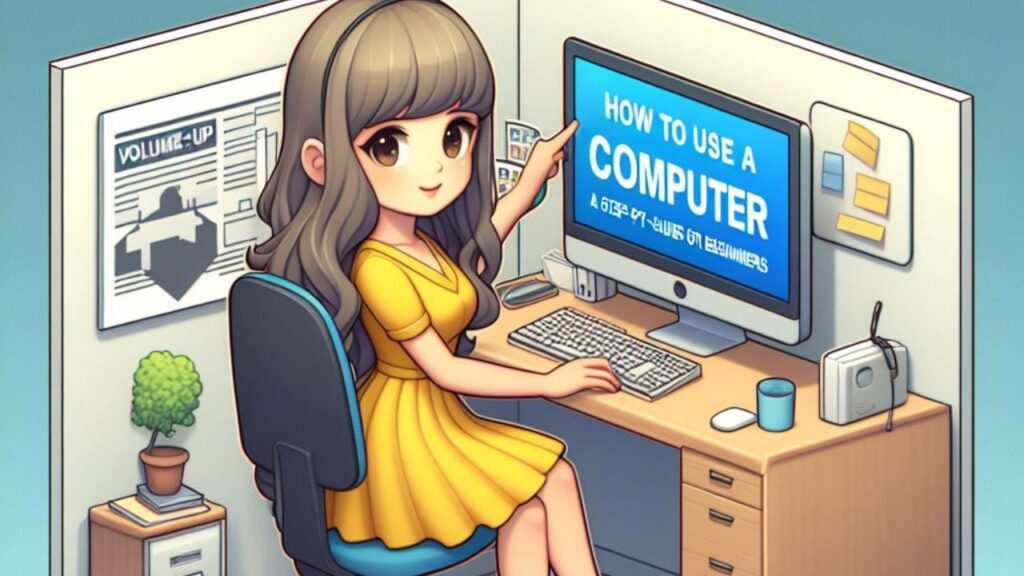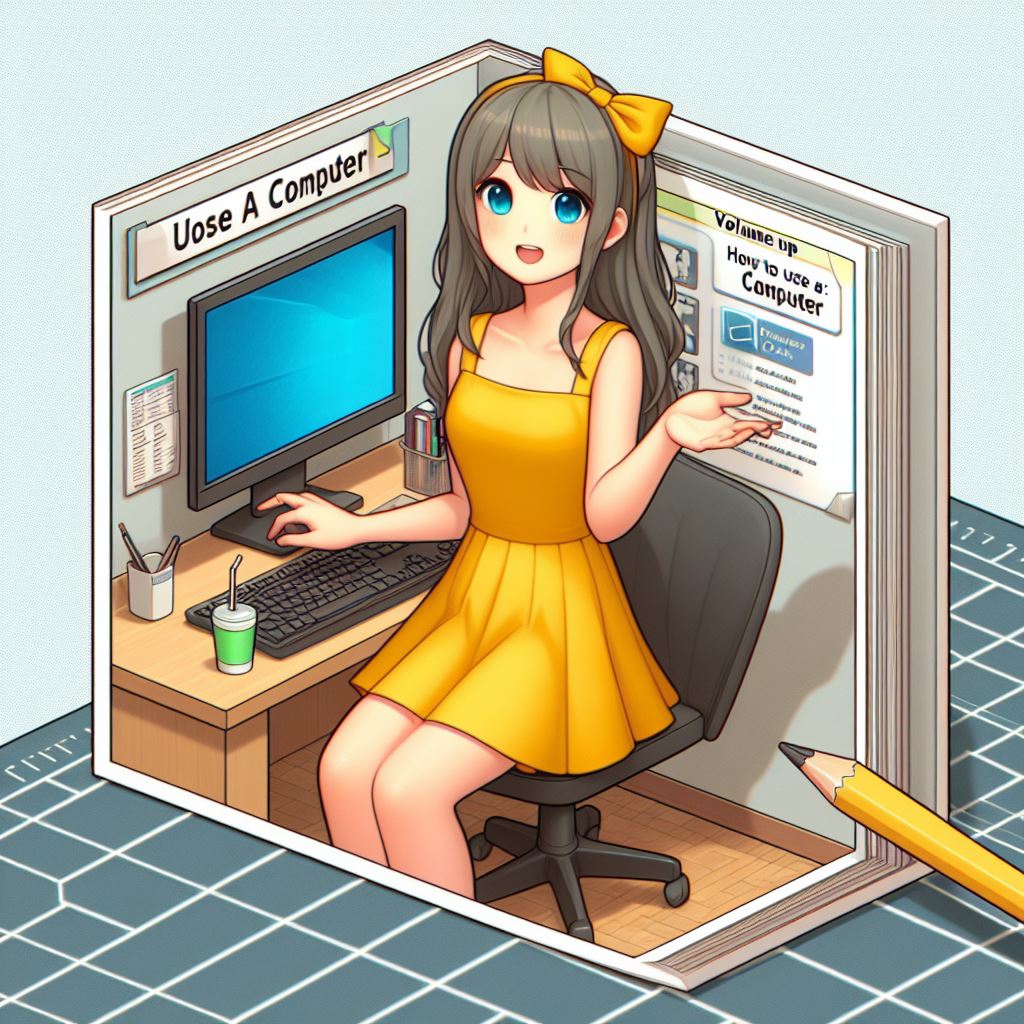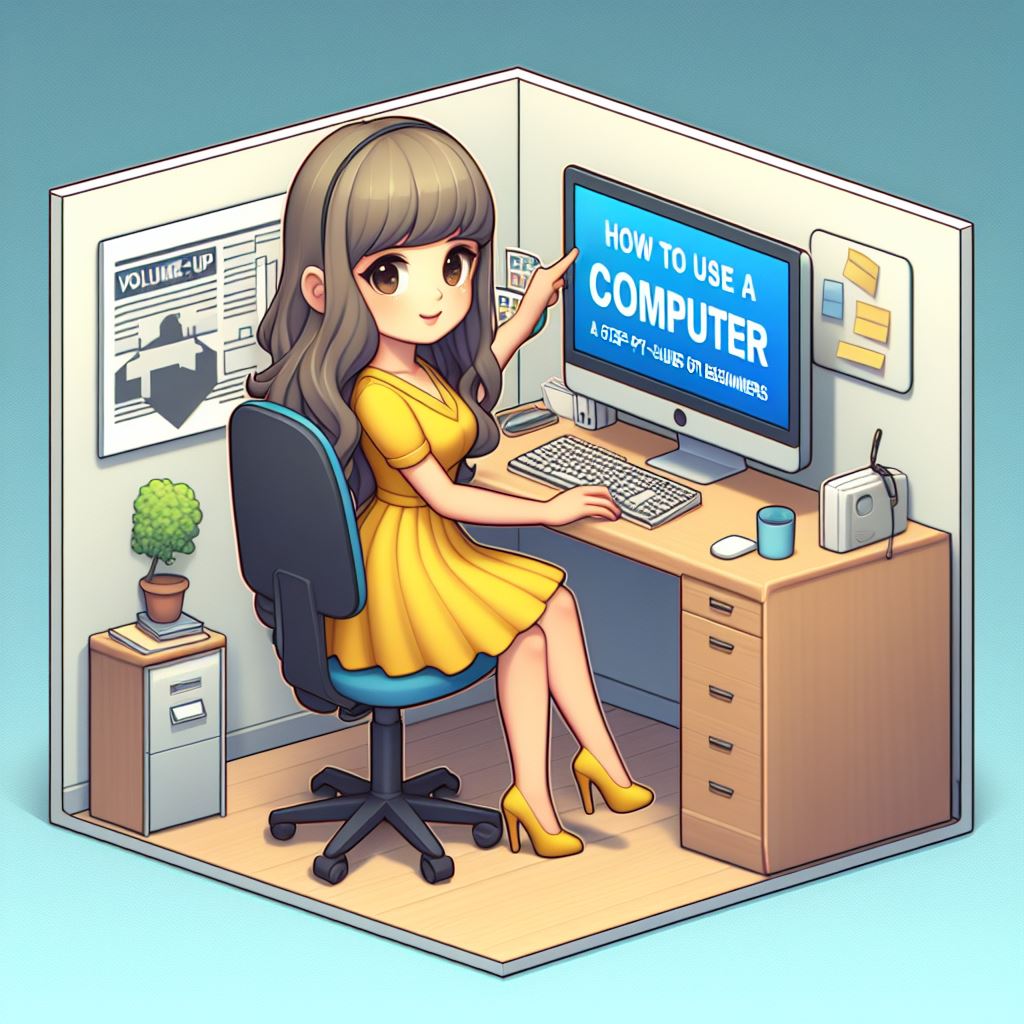
Tata Nano EV: A Retro Revival for the Electric Age? | 0169
Step by step instructions to Utilize a PC: A Step-by-Step Guide for Newcomers The computer has evolved into an indispensable piece of technology in today’s world. Computers can be used for everything from work and communication to entertainment and education. However, the procedure may seem overwhelming to those who have never used one before. Dread not! This extensive aide will walk you through all that you really want to be familiar with utilizing a PC, bit by bit.
Controlling Up: 1. Getting Started How to Locate the Power Button: Find the power button on your PC. It’s regularly a round or square button with the general power image (a circle with a line coming out the top). The power button on a desktop computer will be on the front panel of the case. It’s usually on the side or near the keyboard on a laptop.
- Turning On the Monitor: Remember the screen! A separate power button can be found on the bottom or back of most monitors. Search for a comparable power image or a little light that shows it’s on.
- Getting Ready: Press the power button on your PC. The PC will go through a startup cycle called booting up. During this time, you could see a progression of screens with logos and data. This cycle can take anyplace from a couple of moments to several minutes.
- Signing In (Optional): When the PC has completed the process of booting, you may be provoked to sign in. This typically includes entering a username and secret word. In the event that you’re utilizing a PC at home, you shouldn’t have to sign in. In any case, on a work or school PC, a login will probably be required.
The Workplace: Your Computerized Work area
Subsequent to signing in (if fundamental), you’ll show up at the work area. This is the fundamental screen of your PC, like a computerized work area. It is the starting point for all of your activities and programs.
- Icons: The work area is frequently populated with symbols. These are little pictures that address projects, documents, and envelopes. Double tapping on a symbol will open it.
- [Taskbar]: Running along the lower part of the screen (on Windows) or the highest point of the screen (on Macintosh) is the taskbar. This bar shows open projects and permits you to effortlessly switch between them.

Utilizing a Mouse and Console: Your Fundamental Apparatuses
The mouse and console are your essential apparatuses for collaborating with the PC.
- Mouse: The mouse is a little handheld gadget that you continue on a level surface to control a pointer on the screen. Items can be selected by clicking the left button, whereas the right button typically opens a context menu with additional choices. Looking with the wheel permits you to explore through not insignificant records or reports.
- Keyboard: Text and command input are done on the keyboard. It additionally has extraordinary keys that carry out unambiguous roles, for example, control keys (Ctrl, Alt, Shift) and capability keys (F1, F2, and so on.).
Exploring with the Mouse:
- Clicking: A solitary left-click chooses a thing or opens a program. Double clicking: Rapidly clicking two times with the left button opens a record or envelope. Right-clicking: * Tapping the right button raises a setting menu with extra choices connected with the chose thing.
- Dropping and dragging: Snap and hang on a thing, then move the mouse to another area and delivery to move the thing.
Dominating the Keyboard:
- Composing Text: Type letters, numbers, and symbols on the keyboard.
- Keys for the Arrows: You can move the cursor around the screen using these keys—up, down, left, and right—to access menus and lists.
- Enter Key: By pressing Enter, choices are confirmed, programs are opened, and forms are filled out with information.
- The Backspace key: erases the character that is behind the cursor.
- Keys for Control (Ctrl), Alt, and Shift: These keys are many times utilized in blend with other keys to perform explicit activities. For instance, Ctrl+C is utilized to duplicate text, and Ctrl+V is utilized to glue replicated text.
- (F1-F12) Function Keys: These keys have various capabilities relying upon the program you’re utilizing. They could be used to save files (F12) or refresh a website (F5).
Examining Applications and Programs: The Software That Gives You Access to Various Functions on Your Computer Applications, or programs, are the heart of your computer. There are incalculable projects accessible, each intended for a particular reason. A few famous classes include:
Investigating Projects and Applications (proceeded)
- Web Browsers: ( You can access the internet and browse websites using these programs, such as Chrome, Firefox, and Safari, for instance. Web browsers can be used to do a lot of things, like look up information, read news articles, watch videos, shop online, and so on.
- Word Handling Programs: ( e.g., Microsoft Word, Google Docs, LibreOffice Author) These projects are utilized for making and altering text archives, like letters, reports, and articles. They offer elements like designing text, embedding pictures, and spell checking.
- Calculation sheet Programs: ( You can create and manage spreadsheets, which are grids of cells used to organize and analyze data, with these programs (for example, Microsoft Excel, Google Sheets, and LibreOffice Calc). Accounting sheets are valuable for errands like planning, making diagrams, and performing computations.
- Show Programs: ( e.g., Microsoft PowerPoint, Google Slides, LibreOffice Intrigue) These projects are utilized for making introductions with slides that can incorporate text, pictures, recordings, and diagrams. Introductions are frequently utilized for giving discussions, conferences, and school projects.
- Picture Altering Programs: ( e.g., Adobe Photoshop, GIMP, PaintShop Star) These projects permit you to alter and control computerized pictures. You can crop photos, change the colors, add effects, and make graphics with them.
- Video Altering Programs: ( e. g., Adobe Debut Master, iMovie, HitFilm Express) These projects permit you to alter and make recordings. They can be used to create videos that look like professionals by trimming clips, adding transitions, inserting music and effects, and so on.
- Email Clients: ( e.g., Microsoft Viewpoint, Gmail, Thunderbird) These projects permit you to send and get messages. They can be used to communicate with family, friends, and coworkers.
- Games: Gaming is most popular on computers. There are endless games accessible in different types, from procedure and experience games to confound games and first-individual shooters.
- Virtual Entertainment Applications: ( Facebook, Twitter, and Instagram, for instance.) These applications let you connect with people you know online. You can utilize them to share refreshes, photographs, recordings, and messages.

Finding and Introducing Projects
New projects can be gotten from different sources, including:
- Downloads of software:** Numerous product designers offer downloads of their projects straightforwardly from their sites. Digital Stores: Online stores like the Microsoft Store (Windows) or the Application Store (Macintosh) offer a wide determination of projects for buy or download.
- Software that is free and open-source:** There are numerous open-source and free software choices on the internet. Frequently, these programs are as good as paid alternatives.
Whenever you’ve found a program you need to introduce, adhere to the establishment guidelines given by the designer. The establishment interaction regularly includes downloading a record and running the arrangement program.
The Web: A Universe of Data Readily available
The web is a tremendous organization of interconnected PCs that permits you to get to data and assets from around the world. Utilizing an internet browser, you can explore to sites that give data on a great many themes. The internet can also be utilized for:
- Communicate: Connect with others via video chat, email, and social media.
- Shop Online: Buy a wide assortment of items from online retailers.
- Access Online Services: Make use of online services like bill payment and banking.
- Stream Entertainment: Watch motion pictures, Television programs, and pay attention to music through real time features.
- Learn and Explore: Track down instructive assets, instructional exercises, and data on any subject under the sun.
Fundamentals of Internet Use: Exploring the Internet The following are some essential information regarding internet navigating:
- URLs: Each site has a special location called a Uniform Asset Finder (URL). The URL tells your internet browser where to track down the site. The website’s domain name is followed by “http://” or “https://” in a typical URL.
- Search Engines: Web crawlers like Google, Bing, and DuckDuckGo are instruments that assist you with tracking down data on the web. You can use the search bar to type keywords or phrases, and the search engine will show you a list of websites that are relevant to your search.
- Links: Sites frequently contain joins that, when clicked, take you to another website page. Connections can be text, pictures, or fastens.
- Bookmarks: Bookmarks permit you to save your number one sites for simple access later.
Remaining Safe On the web: Essential Cybersecurity Practices Although the internet is an excellent resource, it is essential to be aware of the following online safety practices:
Strong passwords are recommended: Make solid and special passwords for all your on the web

